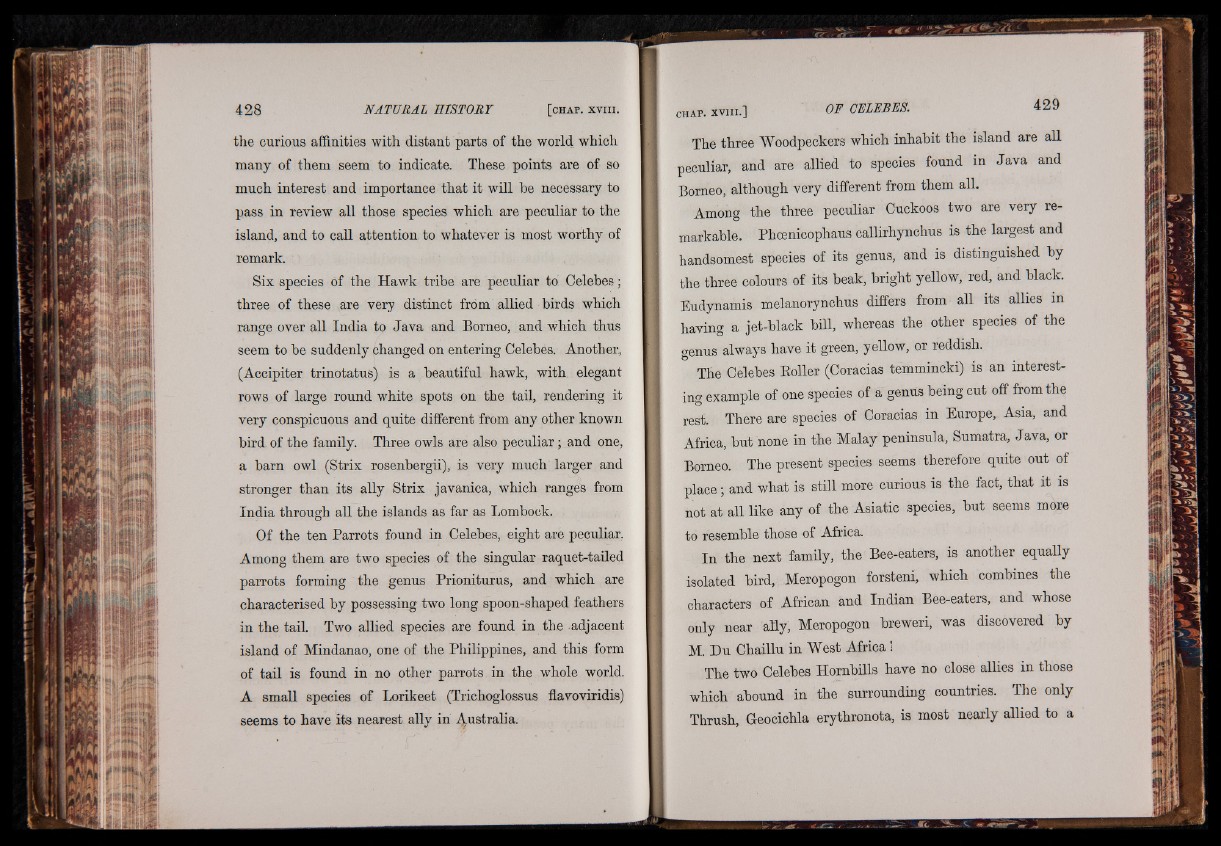
the curious affinities with distant parts of the world which
many of them seem to indicate. These points are of so
much interest and importance that it will he necessary to
pass in review all those species which are peculiar to the
island, and to call attention to whatever is most worthy of
remark.
Six species of the Hawk tribe are peculiar to Celebes;
three of these are very distinct from allied birds which
range over all India to Java and Borneo, and which thus
seem to be suddenly changed on entering Celebes. Another,
(Accipiter trinotatus) is a beautiful hawk, with, elegant
rows of large round white spots on the tail, rendering it
very conspicuous and quite different from any other known
bird of the family. Three owls are also peculiar; and one,
a barn owl (Strix rosenbergii), is very much larger and
stronger than its ally Strix javanica, which ranges from
India through all the islands as far as Lombock.
Of the ten Parrots found in Celebes, eight are peculiar.
Among them are two species of the singular raquet-tailed
parrots forming the genus Prioniturus, and which are
characterised by possessing two long spoon-shaped feathers
in the tail. Two allied species are found in the adjacent
island of Mindanao, one of the Philippines, and this form
of tail is found in no other parrots in the whole world.
A small species of Lorikeet (Trichoglossus flavoviridis)
seems to have its nearest ally in Australia.
The three Woodpeckers which inhabit the island are all
peculiar, and are allied to species found in Java and
Borneo, although very different from them all.
Among the three peculiar Cuckoos two are very remarkable.
Phoenicophaus callirhynchus is the largest and
handsomest species of its genus, and is distinguished by
the three colours of its beak, bright yellow, red, and black.
Eudynamis melanorynchus differs from all its allies in
having a jet-black bill, whereas the other species of the
genus always have it green, yellow, or reddish.
The Celebes Koller (Coracias temmincki) is an interesting
example of one species of a genus being cut off from the
rest. There are species of Coracias in Europe, Asia, and
Africa, but none in the Malay peninsula, Sumatra, Java, or
Borneo. The present species seems therefore quite out of
place; and what is still more curious is the fact, that it is
not at all like any of the Asiatic species, but seems more
to resemble those of Africa.
In the next family, the Bee-eaters, is another equally
isolated bird, Meropogon forsteni, which combines the
characters of African and Indian Bee-eaters, and whose
only near ally, Meropogon breweri, was discovered by
M. Du Chaillu in West Africa!
The two Celebes Hornbills have no close allies in those
which abound in the surrounding countries. The only
Thrush, Geocichla erythronota, is most nearly allied to a